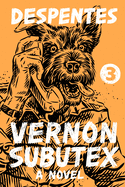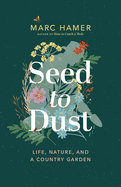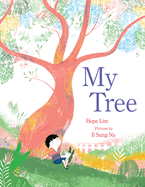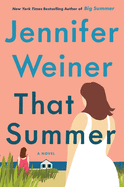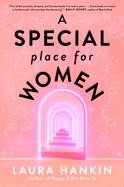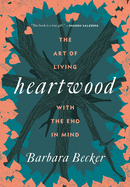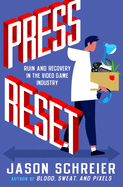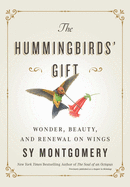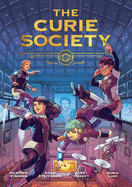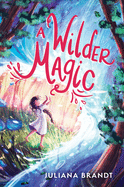Friday, May 14, 2021
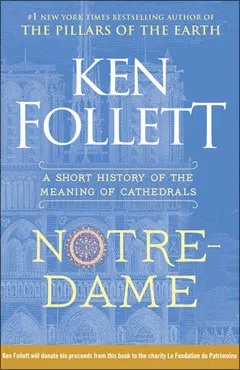 "I have long found deep spiritual peace in the great cathedrals, as do millions of people, believers and non-believers alike," wrote Ken Follett, arguably the patron saint of cathedral fiction, in his nonfiction work Notre-Dame: A Short History of the Meaning of Cathedrals (Viking).
"I have long found deep spiritual peace in the great cathedrals, as do millions of people, believers and non-believers alike," wrote Ken Follett, arguably the patron saint of cathedral fiction, in his nonfiction work Notre-Dame: A Short History of the Meaning of Cathedrals (Viking).
I've been reading some brilliant cathedral-related novels lately. Along with rediscovering the high price--in stone, blood, money and more--extracted for that "deep spiritual peace," I became intrigued with gravity, the "terrible force."
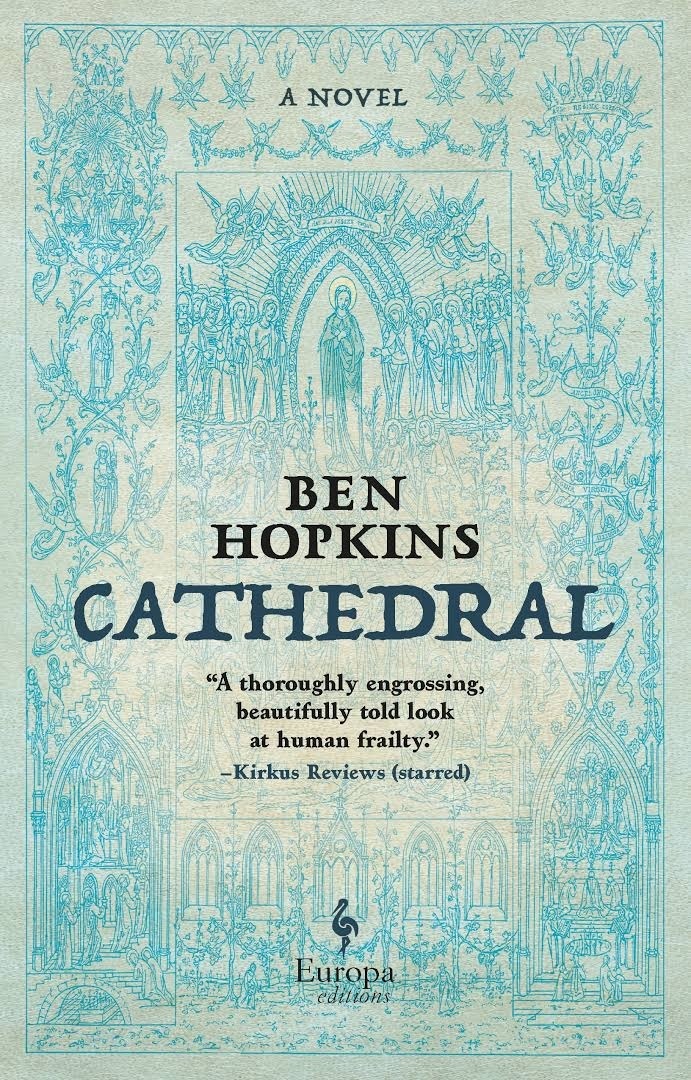 The word gravity hadn't been coined yet during the period depicted in Cathedral by Ben Hopkins (Europa Editions), but it permeates this novel. Just stand for a moment beside stonecutter Rettich Schäffer and observe: "All around him he senses the Cathedral. He sees nothing, but he can sense it is there. Its hundredweights, its thousandweights, its millionweights. Stone, interwoven, layer upon layer by the labor of hands. Reaching upwards to an unseen but yearned-for God. And trapping the terrible force that pulls it ever downwards."
The word gravity hadn't been coined yet during the period depicted in Cathedral by Ben Hopkins (Europa Editions), but it permeates this novel. Just stand for a moment beside stonecutter Rettich Schäffer and observe: "All around him he senses the Cathedral. He sees nothing, but he can sense it is there. Its hundredweights, its thousandweights, its millionweights. Stone, interwoven, layer upon layer by the labor of hands. Reaching upwards to an unseen but yearned-for God. And trapping the terrible force that pulls it ever downwards."
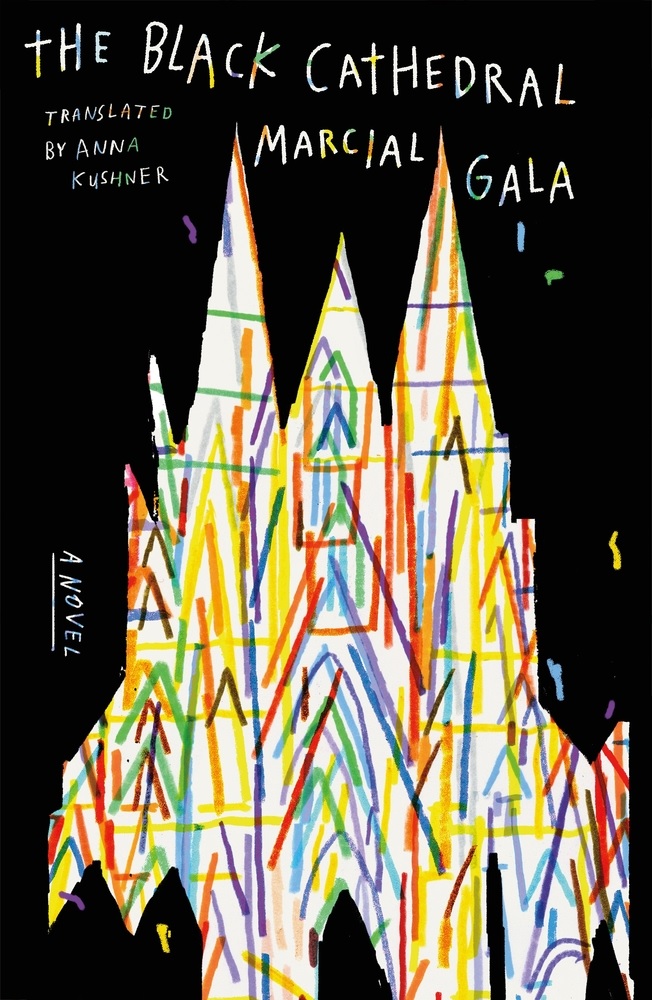 Terrible forces haunt Marcial Gala's The Black Cathedral, translated by Anna Kushner (Picador). Set in a gritty, violent, yet magical neighborhood in the Cuban port city Cienfuegos, the novel's characters speak for themselves, a chorus accompanying the new pastor's vision of a "temple, something that, in these times when everything is in decline, dares to rise up and say, I'm here despite it all, I'm here, look at me," as the architect, Rogelio, describes the concept. He will later observe that the unfinished temple is "in ruins, but continues to be a beautiful building."
Terrible forces haunt Marcial Gala's The Black Cathedral, translated by Anna Kushner (Picador). Set in a gritty, violent, yet magical neighborhood in the Cuban port city Cienfuegos, the novel's characters speak for themselves, a chorus accompanying the new pastor's vision of a "temple, something that, in these times when everything is in decline, dares to rise up and say, I'm here despite it all, I'm here, look at me," as the architect, Rogelio, describes the concept. He will later observe that the unfinished temple is "in ruins, but continues to be a beautiful building."
 Sylvia Townsend Warner's The Corner that Held Them (NYRB Classics) isn't about a cathedral, but in the fictional 14th century Benedictine convent Oby, "that epitome of humdrum," we bear witness to a procession of fascinating women who sustain their community in a harsh, unforgiving world. Gradually, we understand something we were told at the beginning: "A good convent should have no history.... History is of the world, costly and deadly." Sometimes the terrible force is nothing more than living, until we fall. --Robert Gray, editor
Sylvia Townsend Warner's The Corner that Held Them (NYRB Classics) isn't about a cathedral, but in the fictional 14th century Benedictine convent Oby, "that epitome of humdrum," we bear witness to a procession of fascinating women who sustain their community in a harsh, unforgiving world. Gradually, we understand something we were told at the beginning: "A good convent should have no history.... History is of the world, costly and deadly." Sometimes the terrible force is nothing more than living, until we fall. --Robert Gray, editor
Vernon Subutex 3
by Virginie Despentes, transl. by Frank Wynne
The final book in the Vernon Subutex trilogy probes the same social ills as its predecessors, with a fresh dose of cynicism and biting wit. Virginie Despentes's conclusion finds Vernon, a former record-store owner, as the reluctant, taciturn leader of a cult commune in Paris's Buttes-Chaumont. As they lament the loss of their youth and push back against a declining future for which they are partially responsible, the Subutex Group partakes in a series of rave-like events, called convergences, which gain a mythical reputation around Paris. But when a deceased former member leaves behind a large fortune, cracks begin to show in the commune's united façade, and a series of chaotic, violent actions threaten to break the group apart forever.
Setting her novel around the Charlie Hebdo shooting and the Bataclan attack, Despentes (King Kong Theory; Bye Bye Blondie) probes a city in fear: of change, of violence, of stagnancy. Radicals and reactionaries, the secular and the hyper-religious, racists, misogynists and feminists scorn modern-day society, but remain split on how to patch it up. Pure intentions are exploited by the truly villainous: a psychotic music manager willing to do anything for money, a predatory film producer capitalizing on rampant bloodshed. Despentes's talent is her ability to examine the world as it is--the violence, the ugliness, the blights--without losing a certain wicked humor. Frank Wynne's translation from the French is sublime, flowing from one event to the next without pause for a breath. Despentes refuses to sugarcoat or ignore the most gruesome bits of contemporary culture, tackling class, sex, race and politics with a refreshing, contrarian fervor. --Simone Woronoff, freelance writer and reviewer
Discover: This bracing trilogy finale follows DJ-turned-prophet Vernon Subutex and his acolytes, struggling to adapt to an increasingly violent, modern world.
That Summer
by Jennifer Weiner
Jennifer Weiner's page-turning, revealing novel That Summer, set in a suburb of Philadelphia and on Cape Cod, examines the gray area of denial that holds the tension between innocence and guilt.
Daisy Shoemaker is lonely. Her handsome, successful husband, Hal, is busy with his career as a lawyer; her teenage daughter, Beatrice, back home after her recent expulsion from boarding school, wants space to develop her online enterprise; and Daisy's best friend recently died. So when a flurry of e-mails come to Daisy instead of to another woman with a similar e-mail address--someone more successful, surely, with a fuller life--she arranges to travel from Philadelphia and meet up with this other woman in New York.
Jennifer Weiner (Mrs. Everything; Hungry Heart) starts with an idyllic summer on Cape Cod. But it soon becomes clear that something dark and disturbing happened there. The author nimbly exposes the underbelly of wealth and social position, and the harm that comes to perpetrators as well as their victims. Everyone has kept a secret from Daisy. But when it's out, she must decide whether to live a lie or embrace the truth, whatever the cost. Weiner explores the after-effects of trauma, and honesty as the first steps out of the pain and shame that often accompany it. The plot points she layers in from the very first pages contribute to a wallop of a reveal; just when readers might think they know where she's headed, she takes a turn, ever true to the authenticity of her characters. --Jennifer M. Brown, senior editor, Shelf Awareness
Discover: From its foreboding first pages, Jennifer Weiner's riveting novel about truth, deception and the lasting effects of trauma will hold readers' rapt attention.
A Special Place for Women
by Laura Hankin
Jillian Beckley is in desperate need of a breakthrough. She recently returned to work following her mother's death only to discover that the website she writes for is shuttering. Any journalist could relate to her plight. Yet it's not only Laura Hankin's ability so accurately to portray the state of an industry blighted by mass layoffs, but also her deft self-deprecating humor that makes Jillian the sympathetic anti-hero readers can't help but root for, even as she makes some questionable choices.
"Every few minutes, men think about sex. Every few minutes, I thought about how old various women I admired were when they made their first mark on the world," Beckley acknowledges during one of her many incisive internal monologues. "Whenever I enjoyed a piece of writing by a woman, I immediately Googled the year she was born."
A Special Place for Women, Hankin's third book (after The Summertime Girls and Happy & You Know It), isn't a navel-gazing novel about an artist trying to make it, however. In the hopes of publishing a story that will relaunch her career, Jillian infiltrates an elite women's club she suspects is involved in the unjust demise of a beloved politician. Yet her investigation leads her to become more entangled in the all-powerful group and question her decision to write a takedown. While the novel focuses on this sisterhood, all the while satirizing white feminism, a compelling love triangle adds to the book's twists. An uncanny tale of romance and friendship, A Special Place for Women is a riveting genre-bender that grapples with the price of belonging. --Gwen Aviles, freelance writer
Discover: A Special Place for Women is a genre-bending tale perfect for readers who love romance, mystery and mysticism.
Secrets of Happiness
by Joan Silber
Joan Silber is a painstaking observer of how lives touch each other across social divisions, of how surprising connections give those lives new direction, and of how, despite our polite insistence to the contrary, money plays as big a role as chance or fate in determining the courses those lives can take. Secrets of Happiness finds Silber linking together disparate lives and perspectives with Dickensian sweep but 21st-century economy, replete with sly humor and arresting anecdotes reminiscent of Grace Paley. Silber can capture the weight and texture of years in just a couple of piercing lines. There's nothing didactic in Silber's portrayal of contemporary lives shaped by financial considerations--a master storyteller, she lets persuasive offhand detail accumulate over the course of the novel, making the case by holding a mirror to life.
Silber's most recent novels might at first glance sound like nonfiction: 2017's Improvement, winner of the PEN/Faulkner and the National Book Critics awards for fiction, and now Secrets of Happiness, an incisive story of contemporary interconnectivity. These titles, with their echoes of the self-help section, suggest books that promise readers something more practical than what literary fiction tends to offer. In truth, though, all of Silber's novels concern precisely what has always been the concern of great novels: how to get better, how to find contentment, how one makes something out of one's self in a world ruled by money. They both could be called Great Expectations.
In Secrets of Happiness a succession of (mostly) New York narrators regale readers with their very recent history, telling the stories of how they got to wherever they are in intimate direct address, each new narrator someone who has played a role in an earlier story. Their accounts read like what you might overhear a table away as friends have a long, long lunch. "And then we began gradually to quarrel less, talk less, do everything less," one says of a failing romance. "We began to say staleness was natural in the life of a couple. For a few years we had (Tony's idea) a more or less open relationship, which many people said was far better than keeping secrets; I wouldn't recommend it."
The stories kick off when a lawsuit reveals that one narrator's father, a businessman who spends lots of time in Asia, has, in the narrator's words, "a whole other family" brought to the U.S. from Thailand and secreted away in Queens. The lives of those two families figure into--or edge against--the accounts from the novel's five other narrators, though the structure Silber has invented for this and her other recent books is less that of the traditional novel of interconnected stories than it is a vibrant social network.
Despite the deceptively straightforward prose, Secrets of Happiness can be dizzying as it spins its connections and themes: the businessman's secret son reports that his high school girlfriend married a scion of the Schuyler family, owners of a department store chain that's fallen on hard times. In the next chapter, a young woman tells us about her own affair with the Schuyler boy, whose marriage is failing and who downplays his wealth, as they film a documentary in Britain about the history of the mistreatment of workers in the garment industry--the industry that brought the businessman with the secret family to Thailand in the first place.
Silber leaves it to us to hear the meaning in these stories' echoing themes, but commonalities emerge, especially issues of inheritance. At times, as they work through the succession of surprises, disruptions, and bits of luck that have brought them to wherever they've gotten in this world, they note with a touch of bemusement that they're reminded of Great Expectations. They don't dwell on such connections, though, as Silber's raconteurs never waste a line. Instead, they're always on to the next thing, in prose that so persuasively captures that feeling of spoken disclosure that readers may find themselves, as they race ahead, occasionally offering back the encouraging cues we send when friends dish their way through a long story: Mmmhmm. Really? He did not!
Their tales feel lived rather than plotted, contemporary rather than archetypal, and yet they still somehow, suggest the concerns and coincidences that power Dickens's novels. That has something to do with the distribution of wealth in contemporary America and Victorian London. But it goes deeper. Secrets of Happiness demonstrates again and again how the life stories of so many of us today--muddling trajectories, uncertain heritage, and ad hoc families--in the end are still stories, often as unlikely as Pip and Estella's.
We tell them to ourselves; we tell them to others; sometimes, such as when we're lucky enough to read a novel like Secrets of Happiness, we take in a dozen or so at once. In telling or hearing or reading those stories, we find life's shape, maybe even hints at its meaning. In sorting the details, in judging what to emphasize and what to skim past, we may even find happiness. --Alan Scherstuhl
Mystery & Thriller
How Lucky
by Will Leitch
A stranger abducts college student Ai-Chin in broad daylight on a quiet street in Athens, Ga. Daniel, 26, witnesses the crime, but he can communicate only via the computer on his wheelchair, and the police don't really understand him. But Ai-Chin's abductor understands Daniel needs to be silenced, in Will Leitch's debut novel, the heartbreaking, thrilling How Lucky.
As a child, Daniel was diagnosed with Type 2 SMA (spinal muscular atrophy). A doctor told Daniel's mother, "He will never walk. He will never be a regular boy... he could die at any moment." Defying odds, Daniel graduates college, lives on his own and lands an online job handling customer complaints. He's got a sharp mind, though his verbal skills are nonexistent. One of Daniel's caregivers calls a police tip line about the abduction, but Daniel is home alone when a cop follows up in person. Uncomfortable with Daniel's disability, the officer dismisses his statement. Hoping someone else saw Ai-Chin being taken, Daniel shares his story online. He's rebuffed as an attention seeker. Suddenly, an e-mail from the abductor says he knows how to find Daniel. Unexplained muddy footprints appear on Daniel's porch and near the windows. A few days later, Daniel sees the same footprints in his kitchen.
Early in this aching, witty novel a character encourages Daniel to stay kind because "no one will see it coming." The comment stresses how perilous Daniel's situation is, while illuminating his most formidable trait. Daniel can't stand or speak, but faces down a tremendous foe to help a stranger. Through this endearing character, author Will Leitch (Are We Winning?) reminds readers that heroes come in all shapes and sizes, but human kindness defines them all. --Paul Dinh-McCrillis, freelance reviewer
Discover: This modern-day cat-and-mouse suspense thriller echoes Hitchcock's film Rear Window, but gives the concept an unforgettable, bittersweet twist.
Food & Wine
Everyone's Table: Global Recipes for Modern Health
by Gregory Gourdet and JJ Goode
In Everyone's Table, Top Chef star Gregory Gourdet provides home cooks with 200 versatile recipes for "modern health"--a concept he loosely defines as "not a crash diet but a sustainable lifestyle." This way of eating is somewhat paleo-adjacent, heavy on vegetables and sustainable meat and seafood ingredients; the trick, according to Gourdet, is that these dishes are so bold in flavor and exceptional in style that "you probably wouldn't notice that all two hundred recipes are free of gluten, dairy, soy, refined sugar, and legumes," instead seeing only "food you want to make."
And he's right: the recipes here--accompanied with bright, vibrant photographs of fresh ingredients and beautifully plated dishes--promise an abundance of flavor, with ingredients highlighted in such a way that it's easy to forget that some "standard" ingredients, like flour and canola oil, aren't there. Dishes like Creamy Asparagus Salad with Sunflower Seed Furikake, and Mushrooms with Chile, Lime and Mint, are hearty enough to stand as main dishes, or sit aside mains like Seared Scallops or Crispy Fried Chicken with Smoky Chili Salt. Desserts like Apple Bundt Cake with Cider Caramel use alternative flours and sweeteners to create paleo-friendly treats, and an entire chapter on Ferments, Pickles and Preserves offers creative ways to add extra flavor to any dish.
Gourdet includes reflections on his own path to healthful eating--including a detour through alcoholism and addiction--noting that nourishing his body has become part of his sober lifestyle. Sobriety and health don't have to mean sacrificing flavor, creativity or inspiration, however--as evidenced across each page of Everyone's Table. --Kerry McHugh, blogger at Entomology of a Bookworm
Discover: A Top Chef star delivers 200 paleo-friendly recipes highlighting healthful fruits, vegetables and other ingredients to inspire the home cook.
Biography & Memoir
Seed to Dust: Life, Nature and a Country Garden
by Marc Hamer
In his sophomore title, Seed to Dust, Marc Hamer (How to Catch a Mole) chronicles a year in his life as a country gardener, with poignant insights into nature, humanity and himself.
Hamer has been the caretaker of a 12-acre garden in the Welsh countryside for more than 20 years, and outside of his elderly employer, Miss Cashmere, and his devoted wife, Peggy, his most frequent companions are the flora and fauna around him: "[My universe] smells of green and oil, old books, cold air, warm body." In month-long, journal-like chapters, Hamer shares his daily life of physical labor and mental reflection through lush, meditative observations of the natural world while also ruminating on his own shadowed past (an abusive childhood, homelessness) that has nevertheless led him to his current place of contentment. Whether considering the never-ending natural cycle of growth and decay or contemplating humankind's concept of land ownership--"Nothing is ever yours. People who work with the earth and the people who think they own bits of it see the world in totally different ways"--Hamer's writing is open and beautifully immersive, exploring a range of themes with grace and dexterity that never extends into platitudes.
Seed to Dust is a magical amalgamation of memoir, natural history, philosophy and gardening, a breathtaking narrative that transcends genre and geography. Fans of Helen Macdonald's H Is for Hawk and Annie Dillard's Pilgrim at Tinker Creek will find Hamer to be a kindred spirit. Candid, tender, thoughtful and absorbing, Seed to Dust is that rare book that will appeal to nonfiction readers everywhere. --Jennifer Oleinik, freelance writer and editor
Discover: Combining gardening, memoir, nature writing and philosophy, Seed to Dust is an evocative book that transcends genre and geography.
Heartwood: The Art of Living with the End in Mind
by Barbara Becker
An unfortunate feature of contemporary Western culture is the denial of death. But as interfaith minister Barbara Becker demonstrates in her emotionally forthright, often inspiring Heartwood: The Art of Living with the End in Mind, a conscious engagement with this "last and greatest taboo" can be an invaluable resource in living a life filled with meaning and purpose.
Becker is eclectic in her selection of teachings from various spiritual traditions that illuminate brief but revealing vignettes, including her story of losing two daughters to miscarriages (she has two sons), and accounts of her experiences as a Zen Buddhist-trained hospice volunteer in New York City. Some of her most moving anecdotes involve her father, a neurosurgeon, whose first wife was killed in a boating accident only months after their wedding. But her stories are not all somber, as illustrated by the history of Felix, a skeleton first used by her grandfather as a medical student and that remained a family heirloom for two more generations of doctors over 100 years.
Becker also finds deep meaning in a commemoration at the site of the Wounded Knee Massacre at the Pine Ridge Reservation in South Dakota, and in an improvised ceremony with a friend named Generous Bear at Manhattan's Corlears Hook Park, the site of a 17th-century massacre of Native Americans near her Lower East Side home.
Heartwood is a disarmingly unaffected book, but it would be an error to equate that accessible style with a lack of depth. This is a resource filled with wisdom and one that readers will find themselves returning to often in both good times and bad. --Harvey Freedenberg, freelance reviewer
Discover: Interfaith minister Barbara Becker draws thoughtfully on diverse spiritual traditions to show how death can be one of life's great teachers.
Business & Economics
Press Reset: Ruin and Recovery in the Video Game Industry
by Jason Schreier
Jason Schreier made a name for himself unearthing the often harrowing human stories behind the development of expensive, big-name video games in his reporting for Bloomberg News and his previous book Blood, Sweat, and Pixels. The engrossing Press Reset: Ruin and Recovery in the Video Game Industry covers familiar territory from a different angle, focusing on the volatility endemic to the video game industry. Schreier interviews dozens of developers whose passion for developing games was challenged not only by a culture of overwork--particularly during frantic "crunch" periods before deadlines--but also by the frequent layoffs and studio closures that threatened to upend developers' lives. In Press Reset, Schreier considers some of the more dramatic studio closures, showing that even the most well-financed and artistically admired studios can't avoid volatility.
Not all is doom and gloom, however. For some developers, losing employment provided an opportunity to start over, fulfilling their creative urges by branching out into the world of indie games or even leaving the industry entirely to find a healthier way to live and work. Press Reset also explores ways to ameliorate the effects of volatility, from unionizing workplaces to embracing remote work. For video game enthusiasts, Schreier's book provides more of his signature behind-the-scenes reporting, shedding light on infamous episodes like the implosion of ex-baseball star Curt Schilling's 38 Studios, as well as the dark side of widely admired auteurs like Ken Levine. For everyone else, Schreier's incisive portrait of an industry that uses up talented workers according to the whims of millionaire executives might prove all too familiar. --Hank Stephenson, the Sun magazine, manuscript reader
Discover: Press Reset is another feat of video-game reporting from Jason Schreier, exploring the ways constant studio closures and layoffs upend the lives of passionate developers.
Nature & Environment
The Hummingbirds' Gift: Wonder, Beauty, and Renewal on Wings
by Sy Montgomery
As delicate yet bursting with wonders as its subject, The Hummingbirds' Gift is a beautiful, slim volume chronicling the rescue and rehabilitation of tiny twin orphan hummers. Sy Montgomery, whose 20 books include The Soul of an Octopus, poetically relates the tale of the diaphanous creatures and their savior with scientific facts, anthropomorphizing and more than a little tension.
Montgomery was invited to shadow Brenda Sherburn, San Francisco Bay Area sculptor and hummingbird rescuer, after the featherless babies were brought to WildCare, an urban wildlife hospital. She helped with the every-20-minute feedings of their carefully concocted diet--a mash based on crushed fresh fruit flies. Monitoring the inch-and-a-half-long birds, which were eventually identified as Allen's hummingbirds, one of the four types on the West Coast, their foster moms found mites, requiring delicate, potentially traumatizing Q-tip baths. "Zuni" and "Maya" were moved to ever-larger cages, learning to perch, "rev" their wings, then hover--a skill specific to hummers, which can suspend in the air for up to an hour.
Their release, in stages, was as suspenseful as any sporting event. Dangers lurk, even in Brenda's backyard of feeders and blossoms, including Anna's hummingbirds, which can kill in competition for nectar. Zuni and Maya had become strong, wise "bubbles fringed with iridescent feathers," and fledged successfully. Hummingbird, bumblebee, honeybee and butterfly populations are all shrinking, yet Montgomery optimistically muses that if baby birds can be resurrected, "perhaps our kind can heal our sweet, green, broken world." --Cheryl McKeon, Book House of Stuyvesant Plaza, Albany, N.Y.
Discover: This poetic and suspenseful account of the rehabilitation of orphaned hummingbirds is a reminder of the delicacy of nature's creatures.
Children's & Young Adult
My Tree
by Hope Lim, illus. by Il Sung Na
Author/illustrators Hope Lim (I Am a Bird) and Il Sung Na (The Dreamer) form an ideal #OwnVoices Korean American partnership in My Tree, which follows an immigrant child's quest for "home." In the backyard of the new house stands "an old tree. Tall, crooked, quiet." Reminded of the persimmon tree that shaded the family's porch back in Korea, the child names their arboreal companion "Plumee" for the "deep purple plums [that] dotted every branch."
"I spent my first day in America with Plumee," the child recalls, finding comfort in playing in her thick branches. "Whenever I missed my home in Korea, Plumee lifted me up." And then, during a spring windstorm, Plumee falls. "For days, she turned into everything [the child] wished for": a tree house, an island, a ship... and she's large enough to welcome the neighborhood kids to join the fun. But Plumee is breaking and when a little boy is injured--albeit slightly--Plumee must be "hauled away." In the empty space she leaves behind, child and father create new beginnings, until the child "feel[s] right at home."
Empathic vulnerability marks every page of Lim's story: the challenging uprooting and hopeful replanting that define a faraway move, the tenderness of new bonds, the encouragement of childhood creativity, the joy of new growth. Co-creator Na meticulously heightens Lim's narrative with especially affecting whimsical details. Throughout, Na adds special somethings beyond the text: a birthday cake, Plumee's remarkable transformations, the child's artistic memorial. Lim and Na's poignantly affecting collaboration is a reassuring homage to resilient adaptation, familial support and unexpectedly nurturing friendships, ensuring My Tree will take root in hearts of all ages. --Terry Hong, Smithsonian BookDragon
Discover: This #OwnVoices picture book introduces a young Korean immigrant who finds an ideal friend in the large plum tree that graces the backyard of the family's new home.
The Curie Society
by Janet Harvey, Heather Einhorn, and Adam Staffaroni, illus. by Sonia Liao
In this exhilarating STEM-centered graphic novel for young adults, three diverse college freshmen are invited to join a secret group for female scientists.
Simone, an early admission student at Edmonds University, is excited to meet her roommates; unfortunately, she clashes with Taj, an MMORPG and robotics enthusiast, and with Maya, who is laser-focused on academics. Taj, belittled for being a girl who loves tech and can throw a punch, finds it difficult to open up, and Maya is discouraged from making friends by parents who want a Nobel Prize-winning daughter. When an invitation arrives, the three must work together to decode the message. It leads them to the headquarters of the Curie Society, a clandestine organization inspired by Marie Curie's own secret society aimed at fighting misogyny and that supports women making breakthroughs in science.
The Curie Society, written by Janet Harvey (Angel City) and created by Heather Einhorn and Adam Staffaroni (co-creators of the podcasts Daughters of DC and Lethal Lit: A Tig Torres Mystery), is a fun spy thriller that celebrates young female minds. While it showcases the girls' dedication to brilliance, it also highlights the pressures of imposter syndrome and forming relationships. Readers should find great enjoyment in seeing the recruits geek out over historic female scientists as well as advancements in technology, biology and genetics. Sonia Liao's bright, bold art enlivens exciting combat; detailed attention to facial features adds insight to the characters' unspoken thoughts, and full-page panels boost inspiring and momentous scenes. With suspenseful espionage, nerdy humor and a group of dauntless, eager trailblazers fostering genuine friendships, The Curie Society is sure to fascinate curious minds. --Samantha Zaboski, freelance editor and reviewer
Discover: In this delightful STEM-themed YA graphic novel, three recruits to a secret society for female scientists must stop a black-market trade while navigating their first year of college.
A Wilder Magic
by Juliana Brandt
Strong female characters, pertinent contemporary topics and magic rewardingly combine in this lyrically written, family-centered sophomore novel by Juliana Brandt (The Wolf of Cape Fen).
For more than a century, Sybaline's family--all described as having "dark eyes" and "pale skin that burned during the summer"--has lived in an Appalachian valley where magic is an intrinsic part of the land. Over time, Sybaline's momma's family, the Larks, learned to manipulate the magic to "help the valley flourish." Now, though, the government has plans to seize the land. They've built a dam and want to flood the valley to make electricity for the war effort--the same war in which Sybaline's father is fighting. Sybaline and her momma will be forced to move to the city, but Sybaline decides to stay behind. With the help of her cousin Nettle, Sybaline is determined to use magic to save the valley. But magic has a price.
Brandt's A Wilder Magic is an adventure in survival. In this middle-grade novel, Brandt discusses eminent domain and its effects on its victims while also using the concept to explore fear of change. With the help of visual language, Brandt clearly expresses Sybaline's love for the valley and her anger toward the government for taking it away. These descriptions, coupled with an intriguing magic system in which "the magic existed in the land, a piece of nature itself," immerse readers in a world where the setting is just as much a character as the resourceful, spirited females who inhabit it. A Wilder Magic, with its beautiful imagery, relevant themes and inspiring female characters, is vividly enchanting. --Lana Barnes, freelance reviewer and proofreader
Discover: In this adventurous, lyrically written middle-grade novel, a girl vows to save her magical valley home from being seized by the government.


